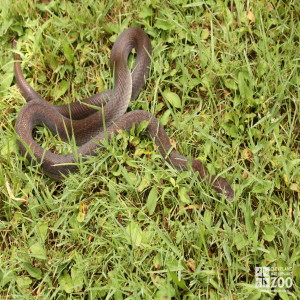Brown House Snake
[Lamprophis fuliginosus]

The Brown House snake ,also known as the African House snake, varies in length from 18 to 45 inches and in color from tan biscuit to rust above and from white to dull white below. It has two lines that start from the nostril on each side of its head with the lower line going along the upper jaw and the upper line running above the eye. Its scales are smooth and shiny. The males are smaller than the females.
Location: Animals Formerly at Zoo
Share:
Range
The range of the brown house snake is Arabia to Eastern Africa, south to the Cape region.
Habitat
The brown house snake is found from outer desert regions to forests and sometimes in urban areas.
Conservation Status
Primary Threats
Gestation
Gestation for the brown house snake is 54 to 57 days.
Litter
The brown house snake lays a clutch of 6 to 13 eggs.
Behavior
The brown house snake is mainly nocturnal. It tries to avoid its chief predators such as owls and small carnivores (I.E. Civets). They constrict their prey.
Reproduction
Mating for the brown house snake takes place during September and October. Clutches of 6 to 13 eggs are produced in November through January and are hatched 54 to 57 days later. New born are 8 to 10 inches long.
Wild Diet
Adults prefer mice and young rats while the juveniles eat small lizards.
